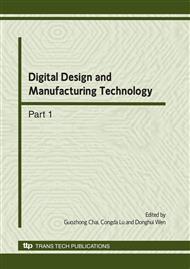p.555
p.559
p.564
p.568
p.573
p.578
p.583
p.587
p.591
The Numerical Simulation of the Single Abrasive Motion Law in the Environment of Structural Surface
Abstract:
As far as the controllability of turbulence flow field surface effect of the soft abrasive flow was concerned, to begin with the analysis of the motion of the particle in the flow field, the paper studied the motion law of particle in the flow field, especially in the boundary layer. Based on the fluid-solid two-phase flow coupling style, it established the single particle dynamics model. Then it established the realizable k-ε model, in the light of the numerical simulation of turbulent flow. With the adoption of the computational method of SIMPLEC, it asked for the velocity and the pressure of fluid in the U-shaped flow passage, the velocity and the motion law of particles with different granularities and velocity, in the boundary layer. Experimentation results tell us that the original velocity plays a leading role in the motion trajectory of particles. The diameter influenced the particles motion trajectory in some degree.
Info:
Periodical:
Pages:
573-577
Citation:
Online since:
March 2010
Authors:
Price:
Сopyright:
© 2010 Trans Tech Publications Ltd. All Rights Reserved
Share:
Citation:


